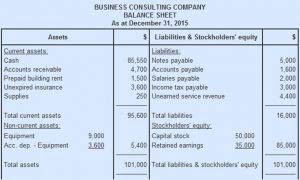The list below includes professionals who can prepare your taxes and represent you in front of the IRS if needed for audits, appeals, or anything related to your return. Estimated closing costs used in the APR calculation are assumed to be paid by the borrower at closing. If the closing costs are financed, the loan, APR and payment amounts will be higher. If the down payment is less than 20%, mortgage insurance may be required and could increase the monthly payment and APR. Accuracy is not guaranteed, and all products may not be available in all borrower’s geographical areas and are based on their individual situation.
We partner with you throughout the year to assure we stay abreast of any issues of concern. Preparing your tax return can easily leave you with more questions than answers. Federal and tax laws are tax preparer cape coral extremely complex, and many people overlook credits and deductions they don’t realize they’re eligible to receive. Our team will ensure that your taxes are added up accurately to avoid paying any unnecessary taxes.
Lot Features
When you turn to us for tax preparation you’ll have peace of mind knowing that your income tax return reflects all the savings you’re owed according to current regulations. We offer quick turnaround on individual tax returns so you can get your money back fast. Many people prefer to believe nameless, faceless, tax software to organize their taxes but nothing beats the important world experience and private touch of an area tax professional. Our Cape Coral, FL firm provides superior tax preparation services that are convenient, accurate, and include a live person who’s able to answer all of your questions. The SchoolDigger rating system is a 1-5 scale with 5 as the highest rating.
We’ll analyze your finances and advise you on the most appropriate tax strategy to save you money. You can count on us to strive to protect your long-term interests. Most tax preparers prepare, file, or assist with general tax forms. Beyond these basic services, a tax preparer can also defend a taxpayer with the IRS. However, the extent of what a tax preparer can do is based on their credentials and whether they have representation rights.
You can trust us to provide tax preparation, planning, and even resolution services for your business as needed. Paying a CPA or tax preparer to do your taxes may be worth it if you have a complex return or have new items or calculations on your taxes that you are not familiar with. We’re highly trained tax accountants that are committed to what we do and exerting to urge the simplest tax savings for each client. We work with both businesses and individuals and sometimes prepare tax returns for a corporation, its owners, and its executives. Our team will evaluate and organize the necessary paperwork and file your state and federal tax returns. We will also offer advice on all the estimated tax payments your business should make to the IRS.
- Clients interact directly with partners and managers to discuss personal or business issues and can enjoy timely delivery of service offerings.
- We offer quick turnaround on individual tax returns so you can get your money back fast.
- Beyond these basic services, a tax preparer can also defend a taxpayer with the IRS.
- Federal and tax laws are extremely complex, and many people overlook credits and deductions they don’t realize they’re eligible to receive.
- However, the extent of what a tax preparer can do is based on their credentials and whether they have representation rights.
Business Services
- Certified public accountants (CPAs) and tax attorneys typically charge more than Enrolled Agents or non-credentialed seasonal tax professionals.
- Accuracy is not guaranteed, and all products may not be available in all borrower’s geographical areas and are based on their individual situation.
- We stay up to date with the ever-changing state and federal laws affecting your unique entity structure and industry to keep your business tax compliant.
- Professional tax preparation costs $100 to $500 per return on average, with most individuals spending about $220.
- The SchoolDigger rating system is a 1-5 scale with 5 as the highest rating.
We’re constantly checking out new tax breaks and deductions we will use to save lots of our clients money on taxes. From income tax returns to business tax preparation services, we exerting to attenuate tax liabilities for all of our clients. A tax preparer is a professional who prepares and files income tax returns for individuals or businesses. While all tax preparers have a preparer tax identification number (PTIN), they have varying levels of education and credentials.
For effective tax preparation in Cape Coral, call our team to schedule a consultation with our tax experts today. Coldwell Banker Realty and Guaranteed Rate Affinity, LLC share common ownership and because of this relationship the brokerage may receive a financial or other benefit. You are not required to use Guaranteed Rate Affinity, LLC as a condition of purchase or sale of any real estate.
Market Trends for 1909 SW 3rd Terrace
Since 1997, our CPA’s have been serving clients achieve their goals. No client is too small or too large to receive ultimate service. We provide a wide variety of accounting, tax, and financial consulting services to meet the needs of our individual and business clients. And because you don’t have to deal with the IRS, we provide you with more time to focus on your other goals like building your business. We keep up to date with tax law changes throughout the year to ensure that you are taking advantage of all tax incentives. Anyone who prepares a tax return for compensation must register.
SchoolDigger ranks schools based on test scores supplied by each state’s Department of Education. They calculate an average standard score by normalizing and averaging each school’s test scores across all tests and grades. Professional tax preparation costs $100 to $500 per return on average, with most individuals spending about $220. While your geographical location may impact the fees, the biggest factors affecting the cost of your tax preparation are the complexity of your tax return and the type of professional you hire. Certified public accountants (CPAs) and tax attorneys typically charge more than Enrolled Agents or non-credentialed seasonal tax professionals.
Those who prepare ten or more returns a year is a commercial tax return preparer. The certificate will also indicate if a person acts as a facilitator for tax refunds. I acknowledge that I have read and agree to the Terms of Use and Privacy Policy.
Price Changes
Although tax preparation for businesses may seem quite intimidating, our team will help you understand the entire process, what you owe, and where you can save now and in the future. Our professionals bolster our years of experience with up-to-date knowledge of the current tax laws and tax best practices. You can rest assured that your tax return for personal taxes will be prepared promptly and with the highest degree of accuracy. Instead of going into your taxes blind, allow our CPA firm to simplify the tax process. We will prepare your individual taxes and resolve whatever tax issues you may have with expertise and due diligence.
We prepare business tax returns for sole proprietors, partnerships, limited liability companies and corporations. Whether your business operates in California only or has locations in multiple states, we can prepare and file your State and Federal taxes. Cape Coral Tax & Accounting Services is a full service solution for all your personal and business tax needs. We have served clients such as Cleveland Clinic, Chico’s, Source Interlink, and Rubbermaid.We work with our clients to meet their tax and accounting requirements with Federal, State and Local tax laws. However, we think it is equally important to apply creative programs to legally reduce the existing tax burden.
This data is deemed reliable but is not guaranteed to be accurate by Edina Realty, Inc., or by the MLS. Edina Realty, Inc., is not a multiple listing service (MLS), nor does it offer MLS access. Preparation of business taxes requires a thorough understanding of all state and federal regulatory tax rules. We stay up to date with the ever-changing state and federal laws affecting your unique entity structure and industry to keep your business tax compliant. Our team of CPAs and enrolled agents work with businesses of all sizes, allowing them to spend more time running their businesses and less time organizing taxes.
While other firms perform tax planning on a transactional basis, we actively seek to offer planning opportunities to our clients through constantly evaluating their current situation. In addition, when needed we can assist with choice of entity, the structuring of transactions, and IRS representation. Non-credentialed tax preparers include seasonal tax service employees and the IRS’s voluntary Annual Filing Season Program participants. These professionals have a PTIN but may not have formal education or certifications and may not be able to represent you in front of the IRS. While most accounting firms may seem the same on the outside, our team is committed to being different by offering reasonably priced services and making ourselves available year-round – not just at tax season. Clients interact directly with partners and managers to discuss personal or business issues and can enjoy timely delivery of service offerings.
We stay up to date with all federal and state tax laws to ensure our clients get superior quality service. Our Certified Public Accountants and Enrolled Agents utilize the best processes and practices for tax preparation, helping you stay compliant while minimizing your tax liability. Contact our Cape Coral office today to schedule a consultation. This information being provided is for consumer’s personal, non-commercial use and may not be used for any other purpose other than to identify prospective properties consumers may be interested in purchasing. Whether you’re looking for individual or business tax preparation in the Cape Coral area, our professionals at MAC have you well taken care of.
The schools shown represent both the assigned schools and schools by distance based on local school and district attendance boundaries. Attendance boundaries change based on various factors and proximity does not guarantee enrollment eligibility. Please consult your real estate agent and/or the school district to confirm the schools this property is zoned to attend. Looking for the simplest tax preparation service for yourself or your business? MAC has been offering professional tax preparation and tax accounting services to individuals and businesses in the US since 2008. We’re your most suitable option for tax preparation Cape Coral area because we continue on all the newest revisions and updates to the State and Federal tax regulations.





